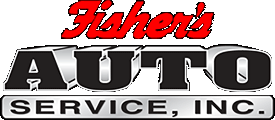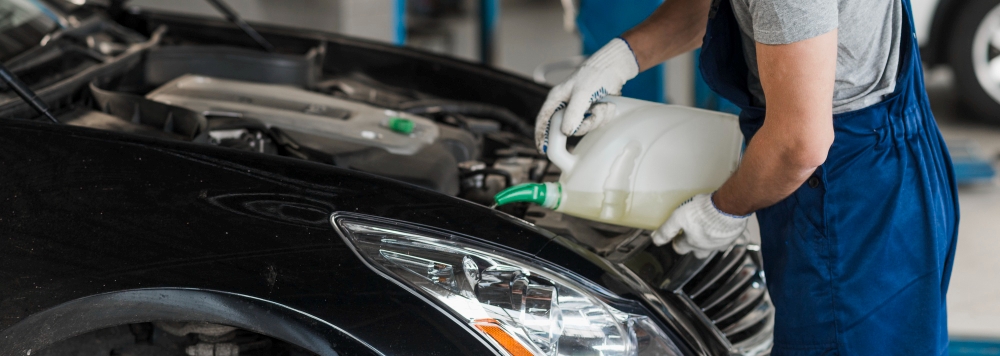 For a lot of people, summertime includes more activities than a daily commute to work. Road trips, vacations, camping, and other traveling opportunities mean your car may need a little TLC to get you there and back again safely. Low auto fluids, like coolant & engine oil, are a common reason for expensive car repairs, while a lack of windshield washer fluid severely impacts visibility. Below, I will explain what each fluid does and how to check it yourself.
For a lot of people, summertime includes more activities than a daily commute to work. Road trips, vacations, camping, and other traveling opportunities mean your car may need a little TLC to get you there and back again safely. Low auto fluids, like coolant & engine oil, are a common reason for expensive car repairs, while a lack of windshield washer fluid severely impacts visibility. Below, I will explain what each fluid does and how to check it yourself.
Check These Auto Fluids Levels
Before you leave on your next driving adventure, be sure to top off these important fluids.
Coolant
The term’ coolant’ refers to the automotive fluid used in your vehicle’s radiator. It is technically a mixture of 50% antifreeze and 50% distilled water. Antifreeze contains chemical additives that raise the boiling point of the coolant, which is extra helpful during the summer. It also has anti-foaming agents and helps reduce corrosion in your vehicle’s cooling system. Most coolant formulas are effective between two and five years, or 30,000 and 60,000 miles. Check your vehicle’s coolant level regularly and add more if needed.
How Do I Check It?
- Park on a level surface
- Start with a cool engine
- Locate your expansion tank or coolant reservoir and read the fluid level
- If the level is below MAX, remove the filler cap
- Ensure your coolant is mixed correctly before adding to the reservoir (50% antifreeze/50% water)
- Add coolant until the level reaches MAX
- Replace the cap and wipe up any spills (antifreeze is toxic)
Engine Oil
The type and grade of engine oil your car needs depends on many factors. The make and model, plus the year of the vehicle, make a difference. It’s best to follow the factory-recommended engine oil mentioned in your owner’s manual, especially if your car is still under warranty. Using the wrong brand, type, or grade of oil can void your dealer’s warranty.
Did you know that different engine oils contain different additives and are not universal, meaning they are not compatible with all engines? Plus, all oils degrade over time. Factors like extreme heat, moisture, and particulate matter (such as metal shavings, carbon, and other contaminants) can contribute to ineffective engine oil.
Leaking oil will result in low fluid levels. If you need to add engine oil frequently, schedule a diagnostic service so a technician can determine the cause and fix it.
How Do I Check It?
- Park on a level surface
- Start with a cool engine
- Locate the engine oil dipstick
- Remove it and wipe away all the oil from its tip with a clean cloth or paper towel
- Reinsert the dipstick all the way and remove it again to read the oil level
- The level should be between the MIN and MAX level (some cars have HIGH and LOW, or 2 dots, or a cross-hashing area instead of words)
- If the level is good, clean the dipstick again and reinsert it until it’s fully seated
- If the level is low, add fresh oil (half a quart at a time) into the oil fill port or reservoir marked with OIL or an icon of an oil can
Transmission Fluid
Transmission fluid in both manual and automatic transmissions lubricates the bearings and gearbox, while helping to keep the transmission cool. It also provides hydraulic pressure and just enough friction to keep the internal parts working without grinding together. It’s important to note that automatic transmission fluid and manual transmission fluid are different. Always use the factory-recommended transmission fluid for your specific vehicle.
Over time, all transmission fluids break down, become contaminated with debris, and lose effectiveness. If your transmission fluid is old or low, you may notice poor vehicle performance, an overheating transmission, or unusual noises when shifting gears. Some newer model vehicles have a closed transmission system, so there’s no way for motorists to check the transmission fluid level. If you suspect your car has low transmission fluid, make an appointment with your service technician to check it.
How Do I Check It?
- Park on a level surface
- Start with a cool engine
- Locate the transmission fluid dipstick
- Remove it and clean the fluid from its tip with a dry cloth or paper towel
- Reinsert the dipstick all the way and remove it again to read the fluid level
- The level should be between the MIN and MAX level (some cars have HIGH and LOW, or 2 dots, or a cross-hashing area instead of words)
- If the level is good, clean the dipstick again and re-insert it until it’s fully seated
- If the level is low, add fresh fluid (half a quart at a time) into the transmission fluid fill port or reservoir (do NOT add transmission fluid to the oil fill port – consult your owner’s manual if you need clarification)
Windshield Washer Fluid
Windshield washer fluids come in many different formulas. They can be seasonal (summer and winter) or target specific needs. They contain special cleaning agents, de-icing chemicals, and even anti-streaking additives to help provide you with the cleanest windshield possible. During the summer months, I use the bug-cleaning formula to remove the sticky bug juices from my windshield. Of course, your needs may be met best by choosing a different formula. And that’s okay. Just remember, don’t mix different types of windshield washer fluid. When you change your fluid from a winter formula to a summer one, drain out the old stuff first.
How Do I Check It?
- Park on a level surface
- Start with a cool engine
- Locate the washer fluid reservoir – the tank is usually translucent
- If the tank is below the FULL mark, you need to add more fluid
- Remove the cap
- Add more washer fluid (remember, don’t mix different formulas)
- Replace the cap
Summertime Auto Fluids Maintenance
Performing routine auto maintenance not only keeps your car running great, but it also extends the lifespan of your vehicle. Studies show that cars that follow the factory-recommended service intervals have a higher resale value than cars with poor maintenance. When you need your next oil change, auto repair, or diagnostic service, give Fisher’s Auto Service a call. Our certified technicians can check your auto fluids, top off your engine oil, coolant, and windshield washer fluid quickly and efficiently. We offer services for all Asian, European, and Domestic SUV, truck, and car models.
Schedule An Auto Fluids Service
Give us a call at (425) 823-4441 or visit our website to schedule an auto fluid appointment for all your summertime auto maintenance needs.

